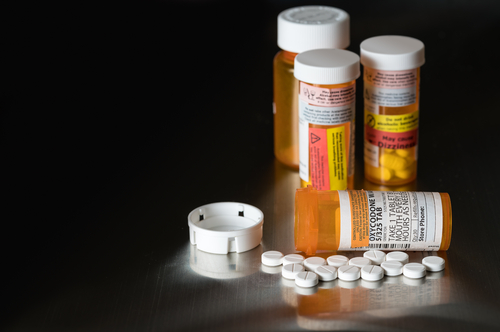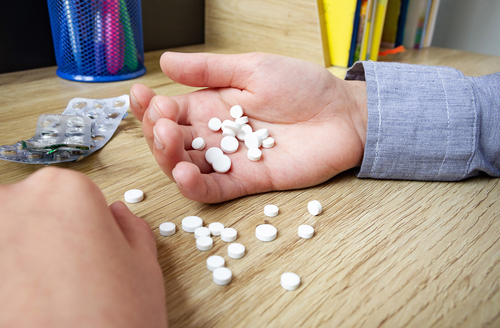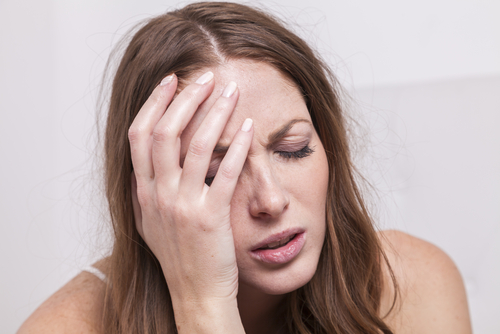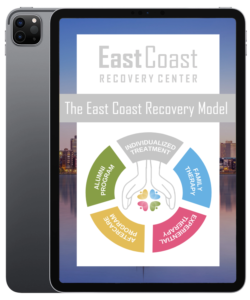Oxycodone is an opioid, one of the most powerful and sedative substances found in modern pain medications, such as OxyContin, Roxicodone, Oxaydo, and Percocet (which also contains acetaminophen). While oxycodone is usually prescribed for moderate to severe pain, it followed along with heroin and fentanyl in the opioid crisis, which changed during the COVID-19 pandemic.
Nearly 75% of drug overdose deaths in 2020 involved an opioid, and even though heroin-involved deaths decreased, prescription opioid deaths still increased. But is the high you get from oxycodone worth the possibility of addiction and death?
This article dives into if oxycodone makes you high, what happens when the effects fade, what side effects are left behind, and how abuse can lead to addiction.
What Is Oxycodone?
Oxycodone is a prescription pain killer that binds to the opioid receptors in your central nervous system, diminishing your body’s ability to detect pain signals and producing a relaxed and euphoric sensation. Unfortunately, these effects are why it’s abused. People might swallow it or inject it with a needle, crush the tablets into fine particles and inhale the dust, or dissolve it in water and inject it. Some individuals heat the tablet on foil and inhale the resulting fumes.
Some individuals abuse oxycodone prescribed to them by their doctor, but others can buy them from illicit sources, including shady websites selling “designer drugs” and street dealers selling loose and undescriptive pills. Other names for oxycodone include Hillbilly Heroin, Kicker, OC, Ox, Roxy, Perc, and Oxy.
Oxycodone is available in various forms. You might come across it as OxyContin® in different strengths (10, 20, 40, and 80 mg) in slow-release tablets. There are also other versions like immediate-release capsules, such as 5 mg OxyIR®. Occasionally, it’s combined with other substances like aspirin (Percodan®) or acetaminophen (Roxicet®).

Does Oxycodone Make You High?
Yes, oxycodone can make you “high,” but it depends on how much you take and how your body responds. Typically, oxycodone is taken by mouth, with its effects beginning to be felt within 15 to 30 minutes and peaking around an hour later.
Someone who’s never had oxycodone may feel the intense euphoric effects the first time they take it. In contrast, others who’ve taken oxycodone for a longer time may have developed a tolerance to their prescribed or desired amount. This means they’ll have to slowly increase their dosage to feel the same effects. The most commonly reported effects from an oxycodone “high” include:
- Euphoria, happiness, and content
- Sedation and drowsiness
- Slowed breathing
- Warmth and heaviness
- Dizziness or nausea
- Disorientation or delirium
Will You Get Addicted To Oxycodone?
Chances are you won’t develop an oxycodone addiction the first time you take it, whether you got it from a prescription, drug dealer, or friend. Just as some people can drink alcohol throughout their lives but never develop an addiction or dependence, individuals can take oxycodone without abusing it. However, studies have reported that individuals with co-occurring mental health disorders (dual diagnosis) have a higher chance of developing a substance use disorder.
They might notice their anxiety, depression, mania, or compulsions are calmer when they take opioids. Instead of exploring the root causes of their mental health disorder and medications designed to treat them, individuals can start abusing opioids like oxycodone to relieve their negative feelings. Soon, the brain is subconsciously programmed to crave instant physical pain relief in response to negative feelings.
Mental health disorders aren’t the only reason why people develop oxycodone dependence. People struggling with chronic pain can find themselves relying on opioids until their body heals. However, they might continue using opioids like oxycodone long after their pain ends, turning from physical pain relief to mental pain relief.
Read more: Is Oxycodone Addictive? Medication Adherence Vs. Abuse

What Happens When The High Fades?
When the effects of an oxycodone high start to fade, people often experience general discomfort, irritability, anxiety, and the return of physical pain sensations. This discomfort might lead them to consider taking another pill to extend the period of relief, usually aiming for the next 6 to 12 hours. However, if the high fades and an individual has been abusing oxycodone for a long time, they can feel physical and psychological withdrawal symptoms if they miss their next dose.
Side Effects Of An Oxycodone “High”
Yes, oxycodone, whether it’s abused or taken as prescribed, can leave side effects. If someone’s body has a negative reaction to oxycodone, they might feel:
- Physical discomfort: Nausea, vomiting, and digestive issues like constipation.
- Altered energy: Drowsiness, feeling tired, and excessive sweating.
- Balance issues: Dizziness, lightheadedness, and unsteadiness.
- Skin effects: Itching, skin irritation, or dry mouth.
- Cognitive effects: Confusion, unclear thinking, and mixed-up thoughts.
- Breathing changes: Slower, shallower breathing (respiratory depression).
- Blood Pressure variations: Reduced blood pressure leading to dizziness or fainting.
- Communication challenges: Slurred speech and unclear expression.
- Pupil changes: Constricted pupils, appearing smaller than usual.
- Movement problems: Impaired coordination and slowed physical responses.
- Sleep disturbances: Changes in sleep patterns and disrupted sleep.
- Appetite shifts: Significant changes in eating habits.
- Physical restlessness: Agitation or slowed movements, feeling restless.
If someone is abusing oxycodone, they might also exhibit strange behavioral and psychosocial side effects, including:
- Obtaining oxycodone illegally: Some individuals may attempt to get oxycodone that has been prescribed to others through borrowing or theft.
- Doctor shopping: Abusers might visit multiple doctors dishonestly to obtain multiple prescriptions for oxycodone.
- Neglecting responsibilities: Prioritizing acquiring and using oxycodone over personal and professional responsibilities.
- Reckless use: Using oxycodone in dangerous situations, such as while driving or when consuming alcohol.
- Failed attempts to quit: Struggling to stop using oxycodone even when wanting to.
- Financial strain: Attempting to acquire money through borrowing or stealing to buy oxycodone.
- Deceptive behavior: Engaging in lies or deceit to hide activities related to oxycodone use.
- Mood swings: Experiencing extreme shifts in emotions.
- Outbursts and violence: Displaying sudden bursts of anger or engaging in violent behavior.
- Anxiety: Feeling heightened unease or worry.
- Paranoia: Having unfounded suspicions or mistrust.
- Social isolation: Withdrawing from social interactions.

Contact East Coast Recovery Center
If you or someone you know is abusing oxycodone to get high, contact East Coast Recovery Center in Boston, Massachusetts. Our addiction treatment team is trained in oxycodone addiction, and many of our staff are also in recovery, knowing exactly what you might be going through. Oxycodone isn’t something you need to rely on forever, and our treatment center is the perfect place to learn new coping skills, address underlying mental health disorders, and begin a path toward true wellness.











